The par 5s at TPC Sawgrass don’t get the attention they deserve. When we talk about Pete Dye’s architecture at the Stadium Course, we often focus on his execution of Deane Beman’s spectator-first concept, or on the treacherous 17th and 18th holes, or, in the past few years, on the PGA Tour’s misadventures in redesigning the 12th. But the par 5s at the Players Championship venue—Nos. 2, 9, 11, and 16—tend to fly under the radar in spite of achieving what has become rare feat: they force 21st-century pros to play thoughtfully from tee to green.
Most par 5s on the PGA Tour are now glorified par 4s. This is the result of advances in equipment, instruction, and training, which have caused the average driving distance on tour to balloon from 256 yards in 1980, when TPC Sawgrass opened, to around 296 yards today. Even on what were once considered longish par 5s, today’s best golfers rarely have any reason to play cautiously. Their goal is usually just to smash their tee shot as far as they can in order to give themselves as short an approach as possible. This is not the most exciting type of golf to watch.
But at the Stadium Course, the four par 5s call for more sophisticated tactics, even though none of the holes measures over 600 yards. They accomplish this through hazards that punish overaggressive play and corridors that twist and tighten in certain places, heightening the importance of angles and shot-shaping.
Here’s our video on the subject:
(The written version below has additional detail.)
Hole 2 – 532 yards
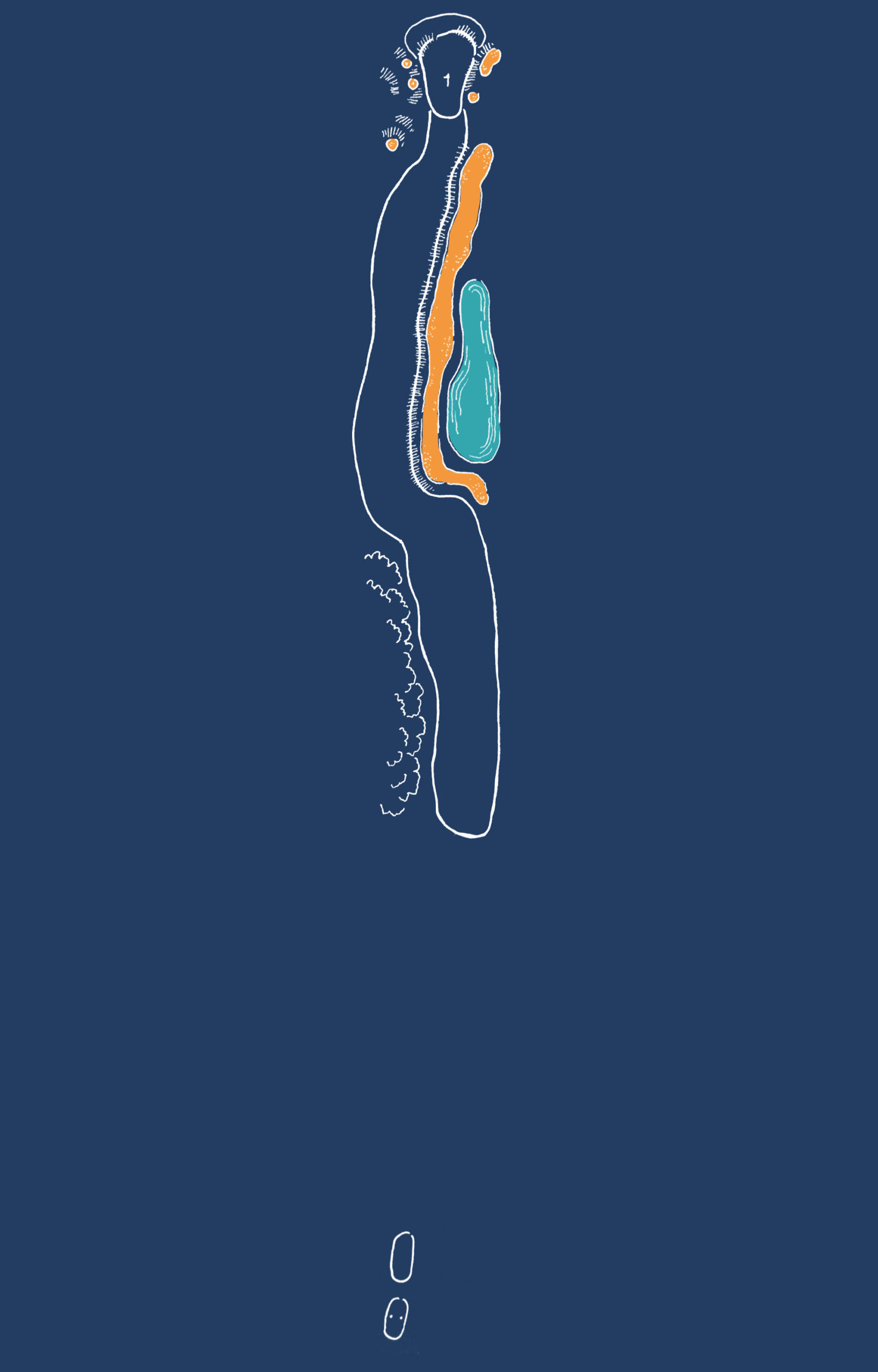
Art by Cameron Hurdus
2021 Players stats
- Scoring average: 4.750 (two eagles, 167 birdies, 230 pars, 43 bogeys, seven double bogeys)
- Hit fairways: 42.09%
- Go-for-the-green attempts: 59.95%
- Go-for-the-green successes: 9.4%
The first par 5 at the Stadium Course, the second hole, uses one of Pete Dye’s favorite ploys. The corridor has an “S”-shape, first bending to the left and then to the right. So for a right-hander, the ideal shot shape off the tee is a draw, and on the second shot, a fade. This is a simple way to assess a player’s ability to work the ball both ways.
-
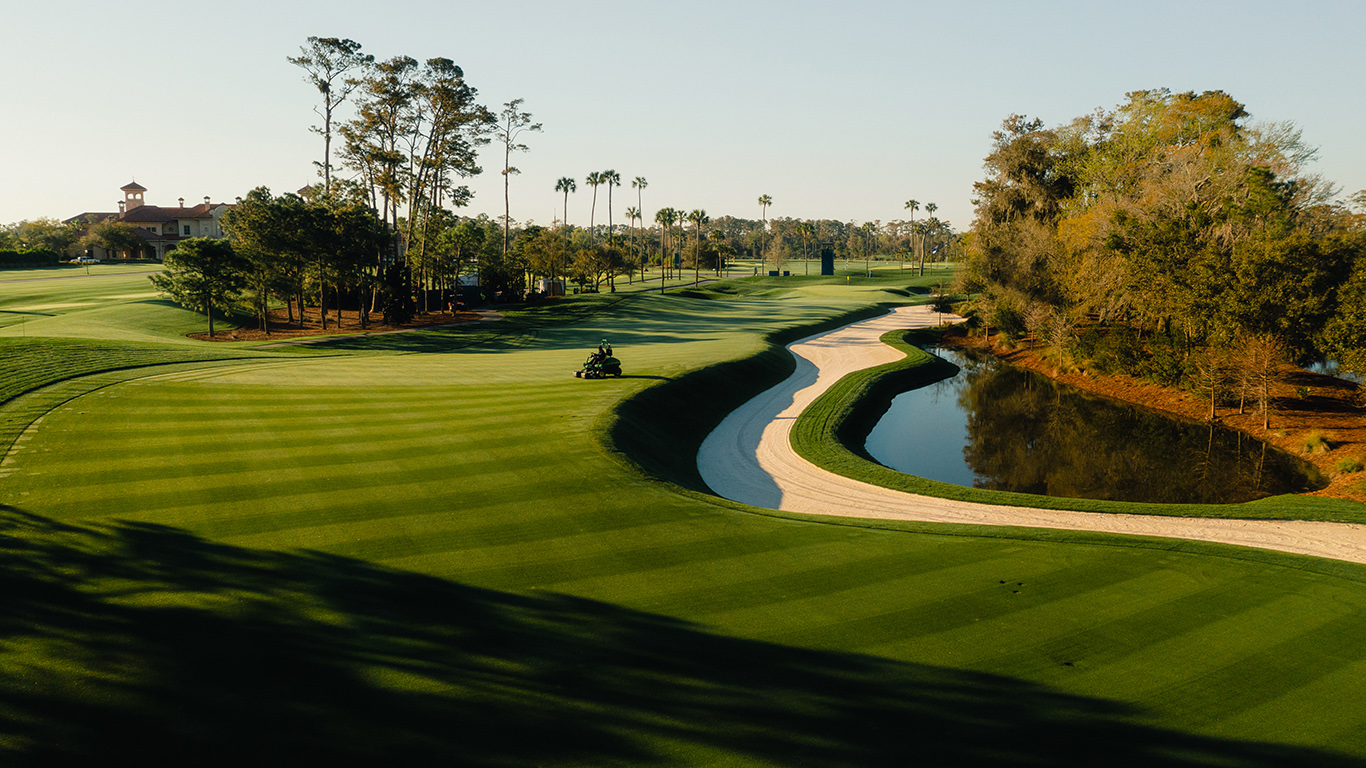
The second fairway at TPC Sawgrass. Photo: Andy Johnson
-
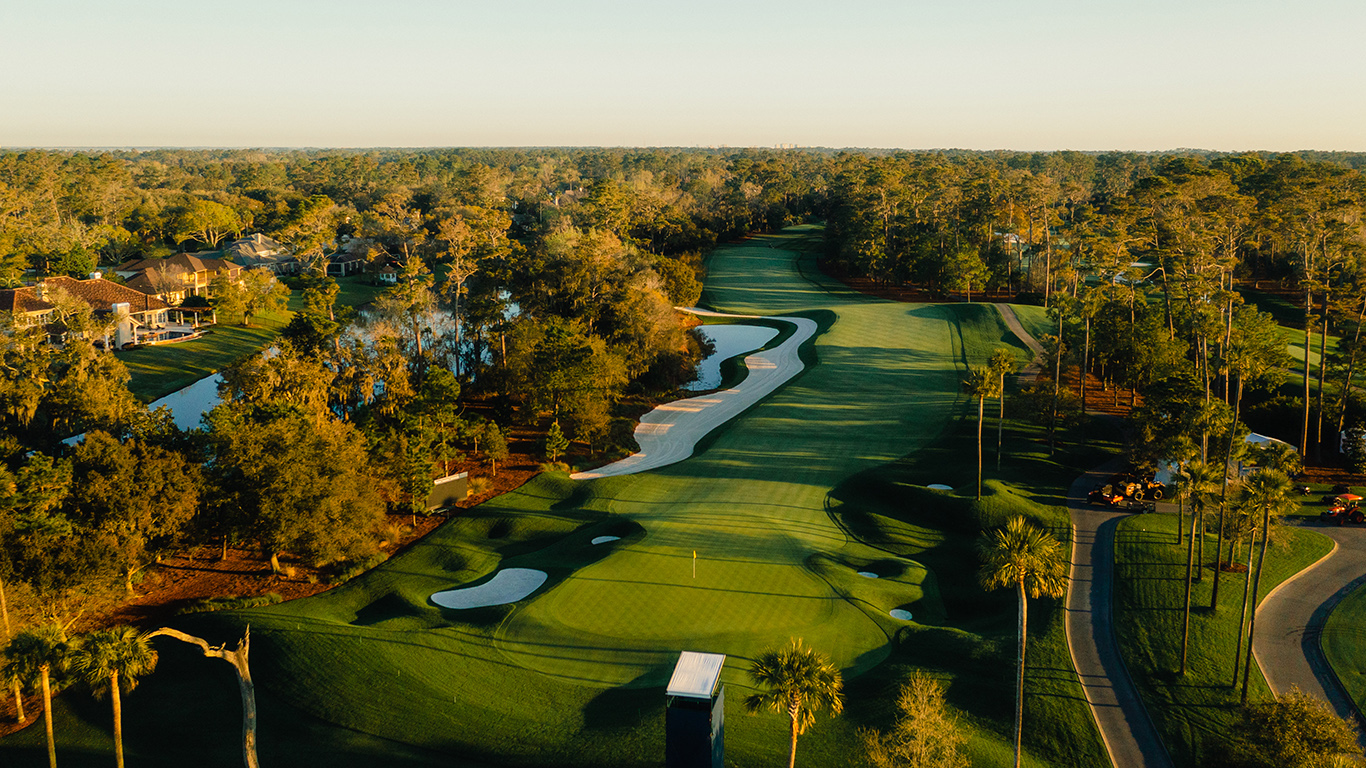
Behind the second green at TPC Sawgrass. Photo: Andy Johnson
Although No. 2 is short by current standards, it was the toughest par 5 in last year’s Players Championship, primarily because it’s hard to hit the fairway. The 2021 field found the short grass off the tee only 42% of the time. The pros laid up on the hole at about the same rate, and only 9% of second shots came to rest on the green. So despite its lack of length, the second hole is plenty challenging.
Hole 9 – 583 yards
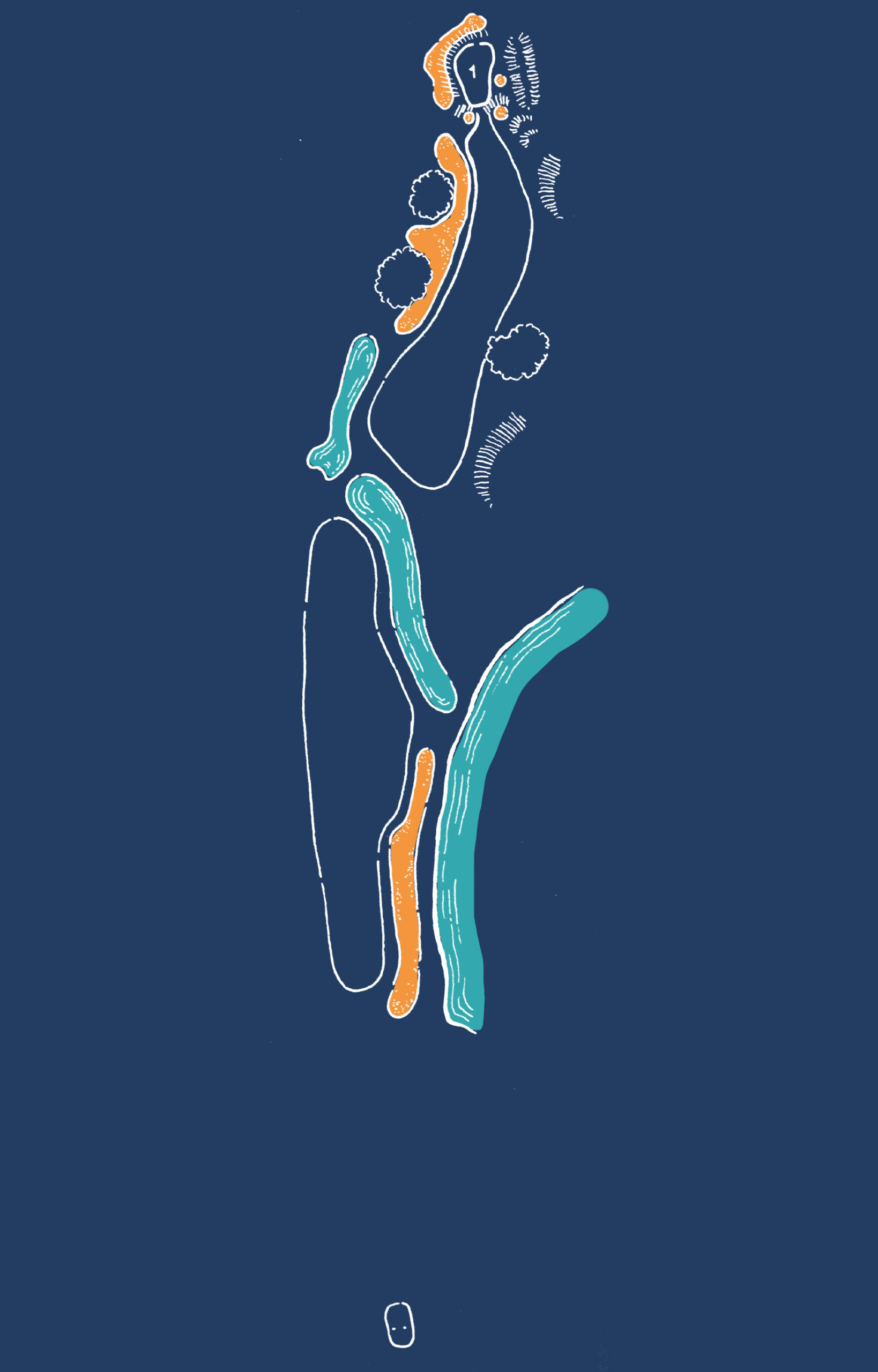
Art by Cameron Hurdus
2021 Players stats
- Scoring average: 4.740 (eight eagles, 155 birdies, 236 pars, 47 bogeys, three double bogeys)
- Hit fairways: 75.06%
- Go-for-the-green attempts: 57.2%
- Go-for-the-green successes: 5.8%
The ninth hole, in contrast to the second, has a wide fairway, at least by the Stadium Course’s standards. But position off the tee still matters a great deal.
If you hit your drive up the right, you will be looking straight up the alleyway that leads to the green, but you’ll need to stay short of the canal, which cuts through the fairway on a diagonal. If you go left, you can blast it as far as you want, but the farther left you go, the more your next shot will be obstructed by trees. So the choice is yours. Do you want a long second shot with a relatively clear path to green? Or a shorter second shot with obstacles in the way?
-
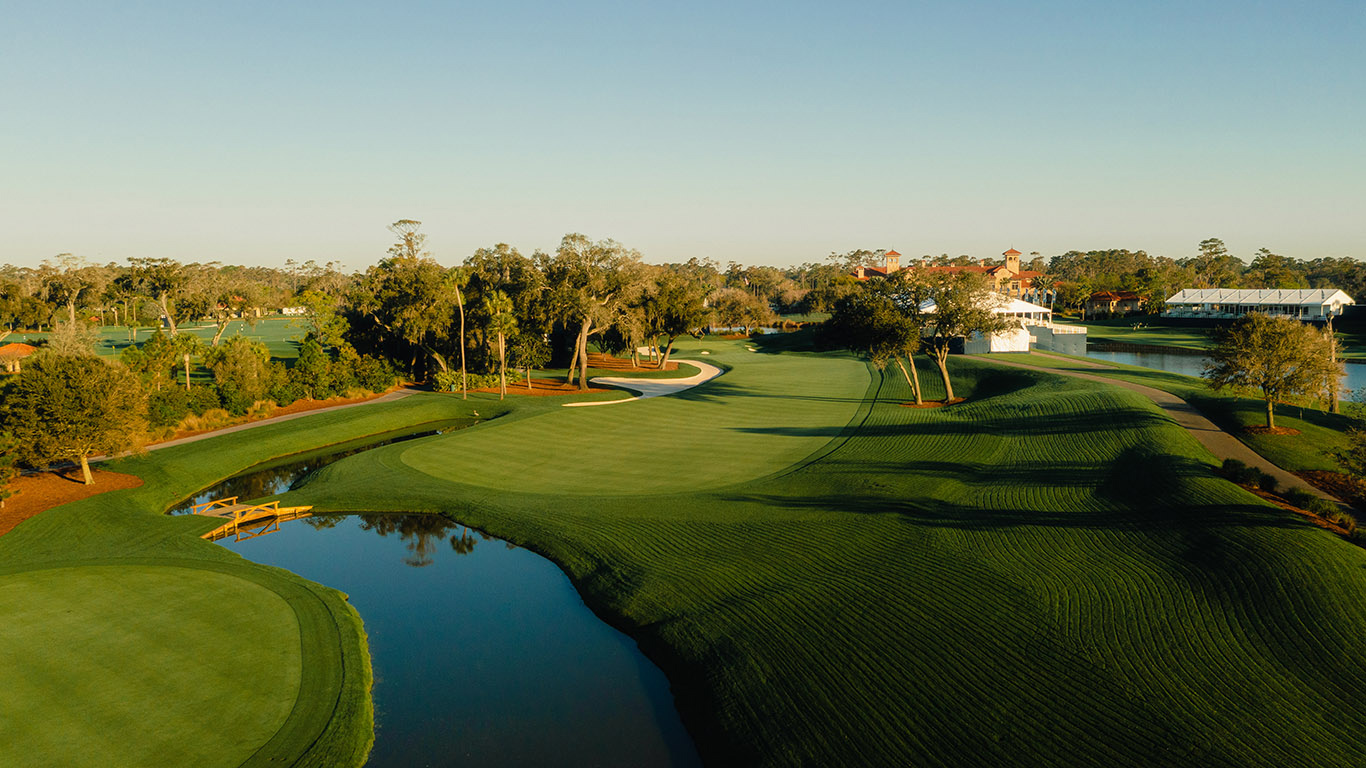
The approach to the ninth green at TPC Sawgrass from the ideal angle. Photo: Andy Johnson
-
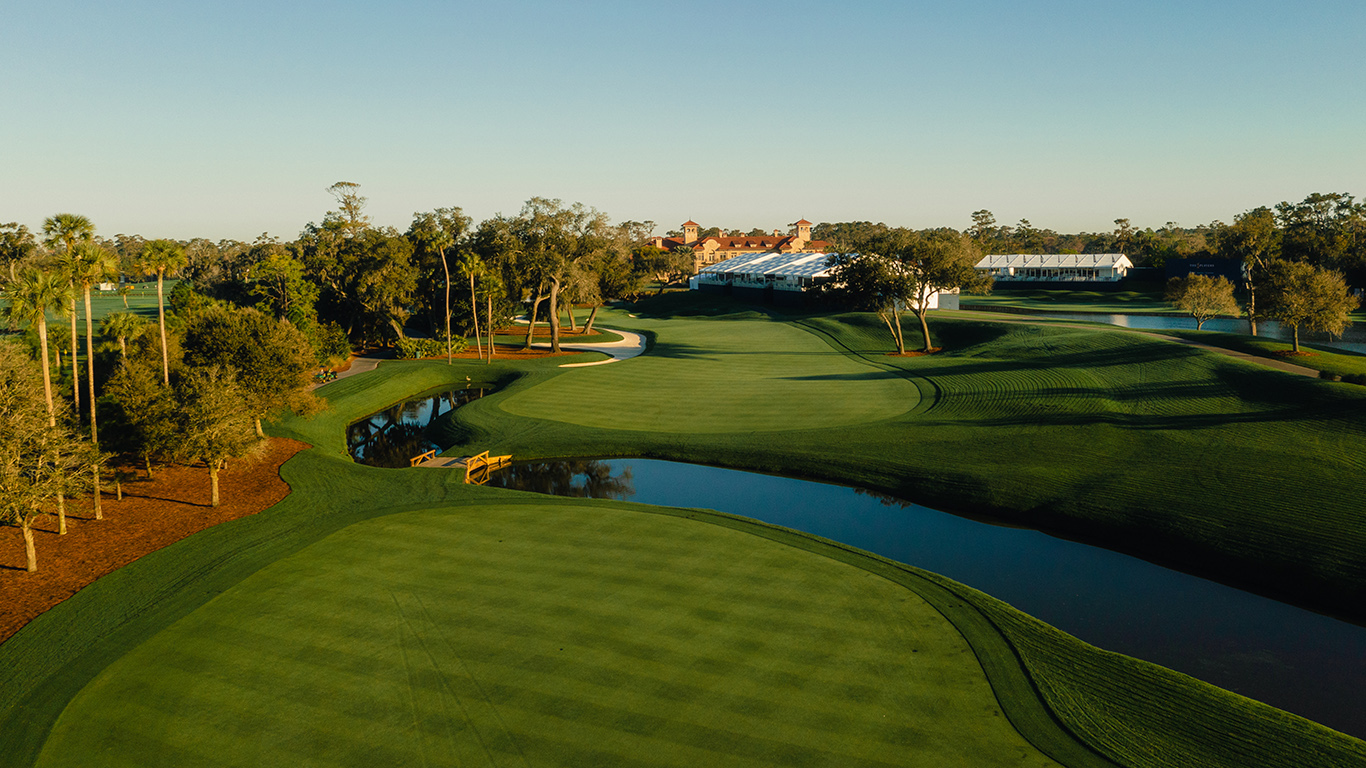
From the left side of the ninth fairway at TPC Sawgrass, the trees on the left come more into play. Photo: Andy Johnson
-
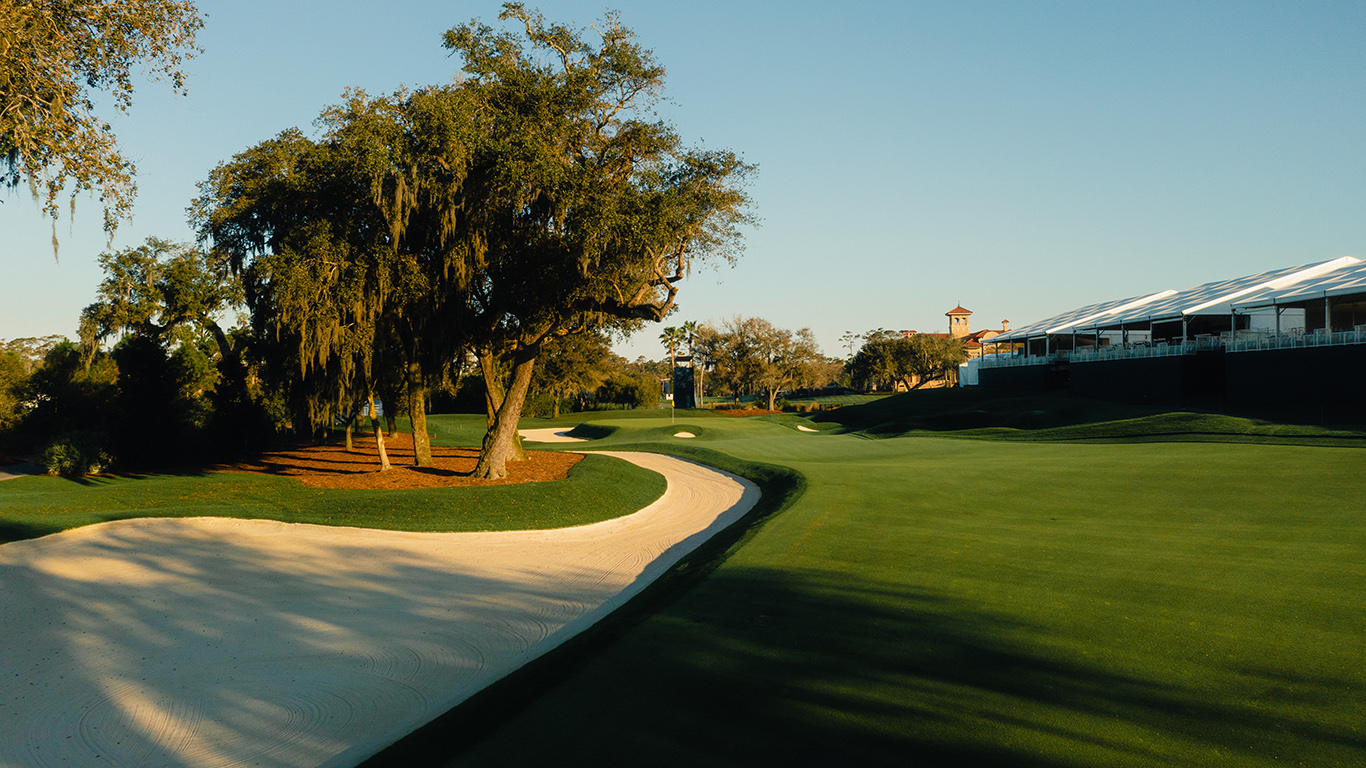
The trees along the left side of the approach to the ninth hole at TPC Sawgrass. Photo: Andy Johnson
The ninth green is one of the more artfully designed at TPC Sawgrass, with wavy contours that blend into the surrounding hillocks, hollows, and pushed-up pot bunkers.
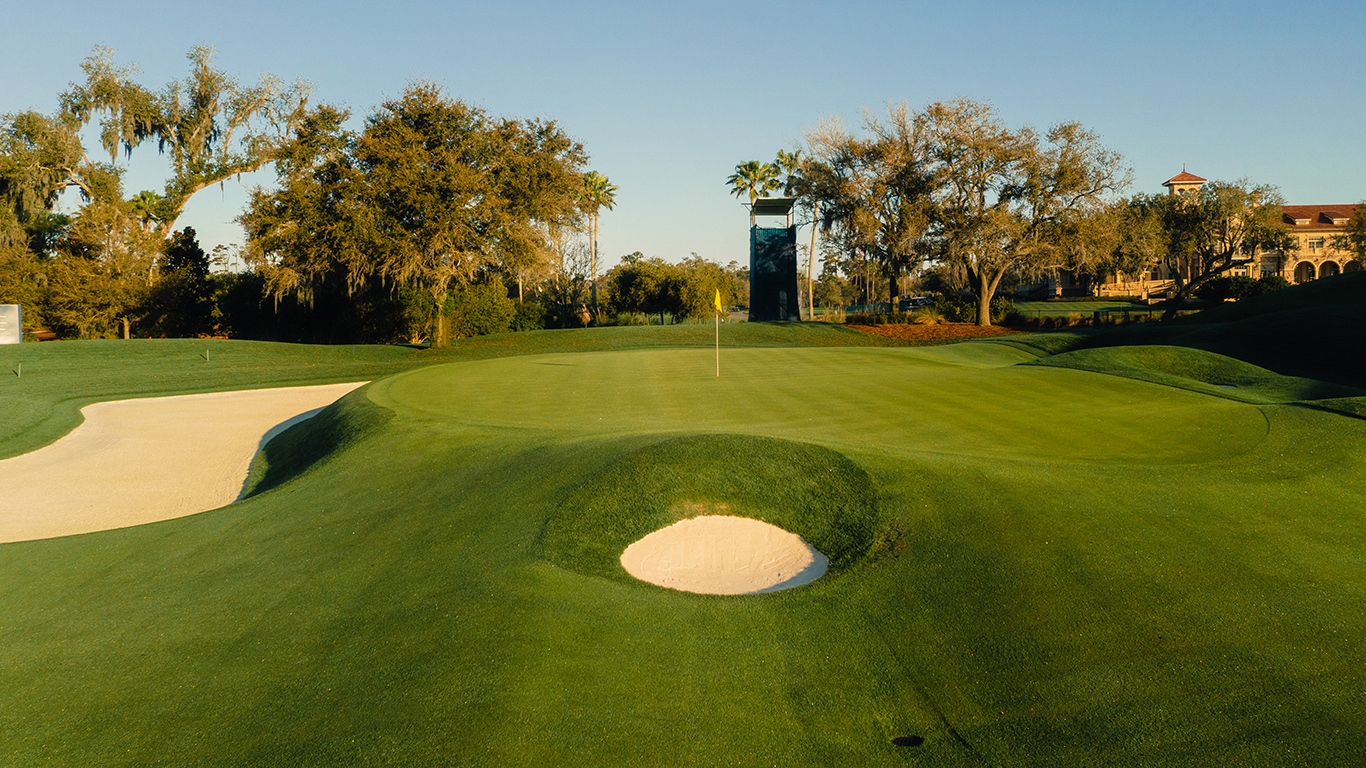
The ninth green at TPC Sawgrass. Photo: Andy Johnson
It’s also a difficult one to hit from distance. Last year’s Players Championship field held the putting surface with their second shots only 6% of the time.
Hole 11 – 558 yards
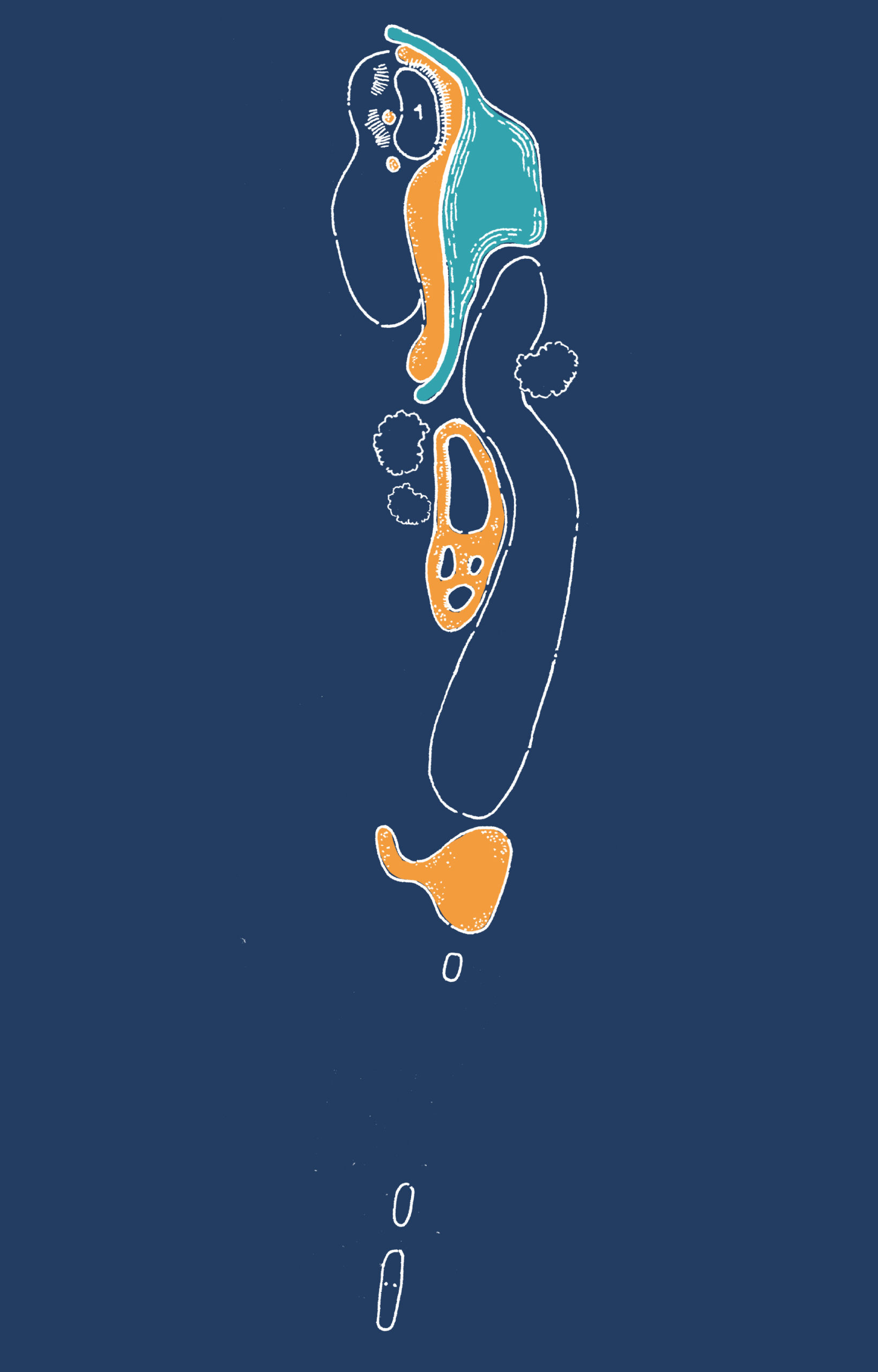
Art by Cameron Hurdus
2021 Players stats
- Scoring average: 4.660 (13 eagles, 176 birdies, 216 pars, 40 bogeys, four double bogeys)
- Hit fairways: 69.93%
- Go-for-the-green attempts: 70%
- Go-for-the-green successes: 16.4%
Like the second hole, the 11th zigs to the left before zagging back to the right. There are two layup zones: one to the right, short of the water; and one to the left, over the water. The one to the left offers the advantage of a short, simple wedge shot down the long axis of the green.
-
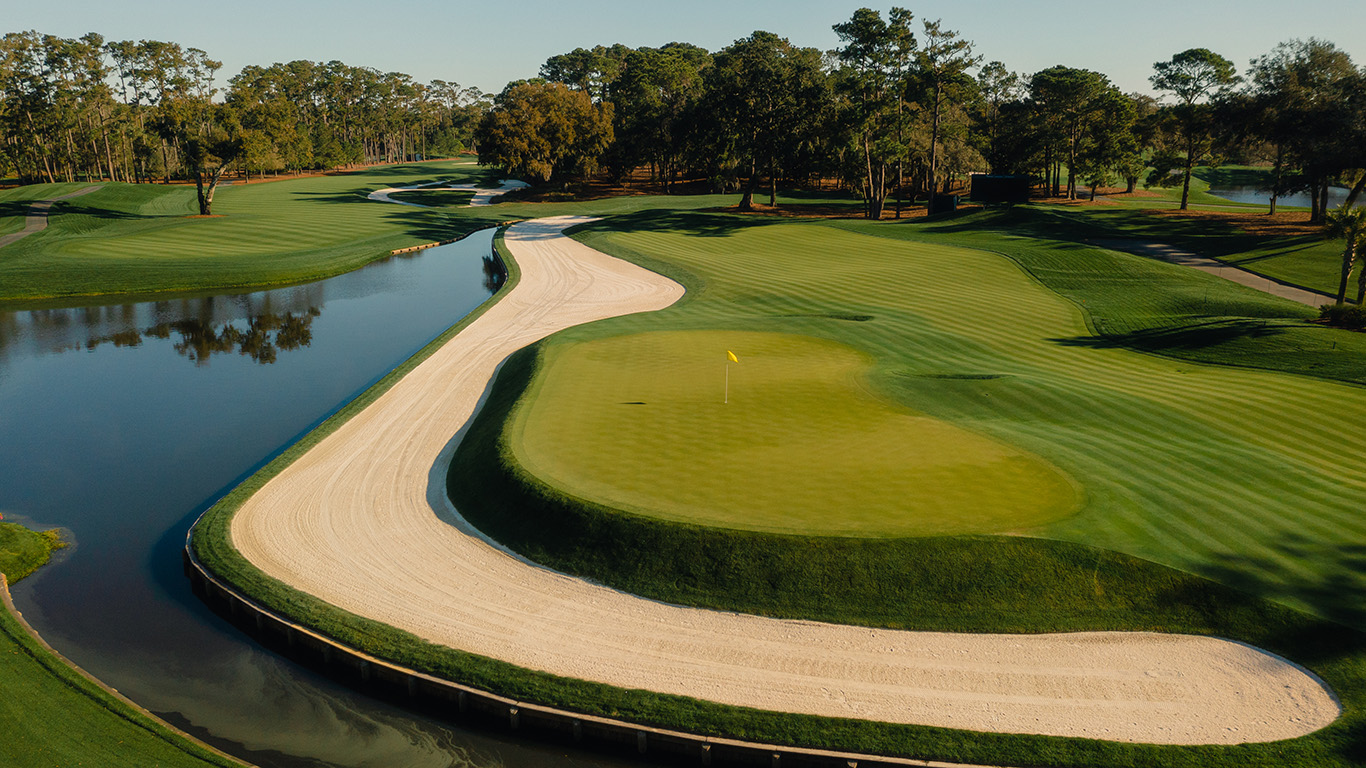
A view from behind the 11th green at TPC Sawgrass, showing both the ideal (right) and less-ideal (left) layup areas. Photo: Andy Johnson
-
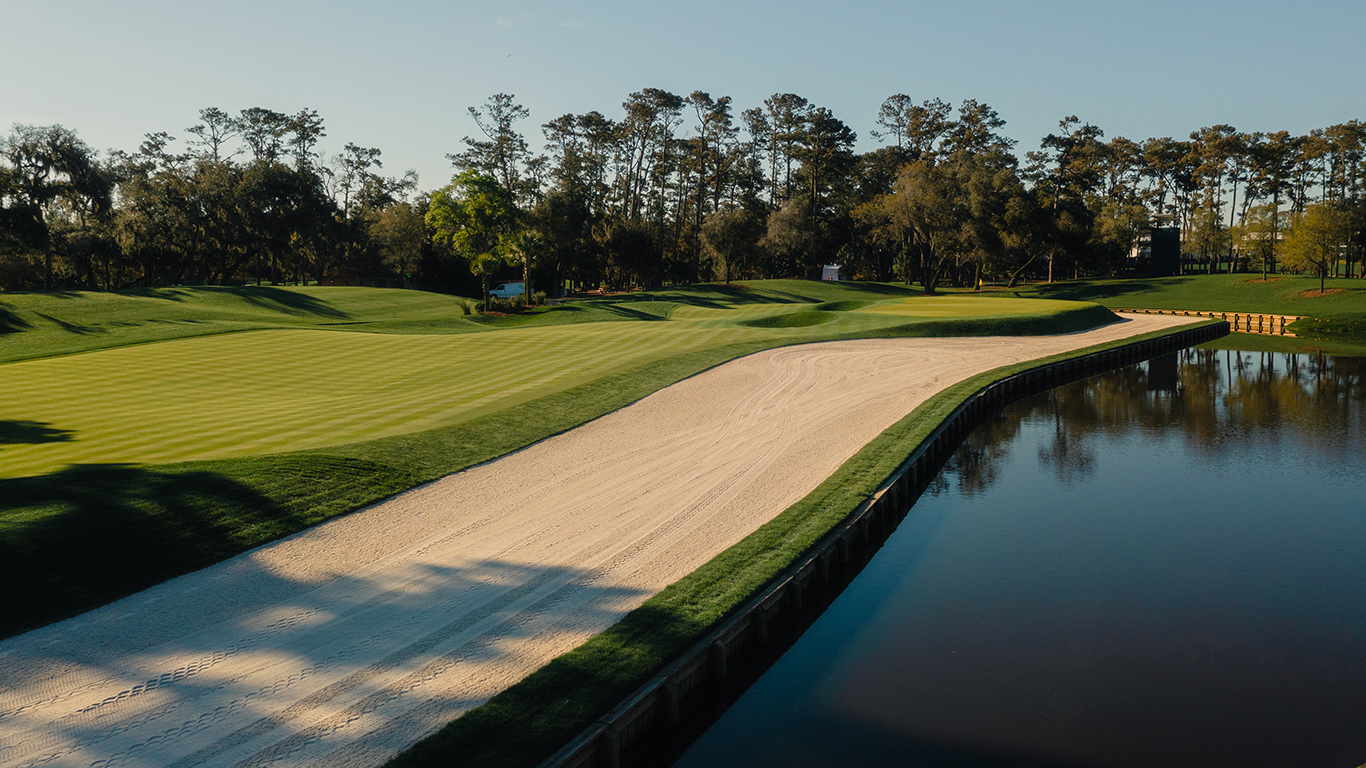
The preferred bail-out zone on the 11th hole at TPC Sawgrass. Photo: Andy Johnson
-
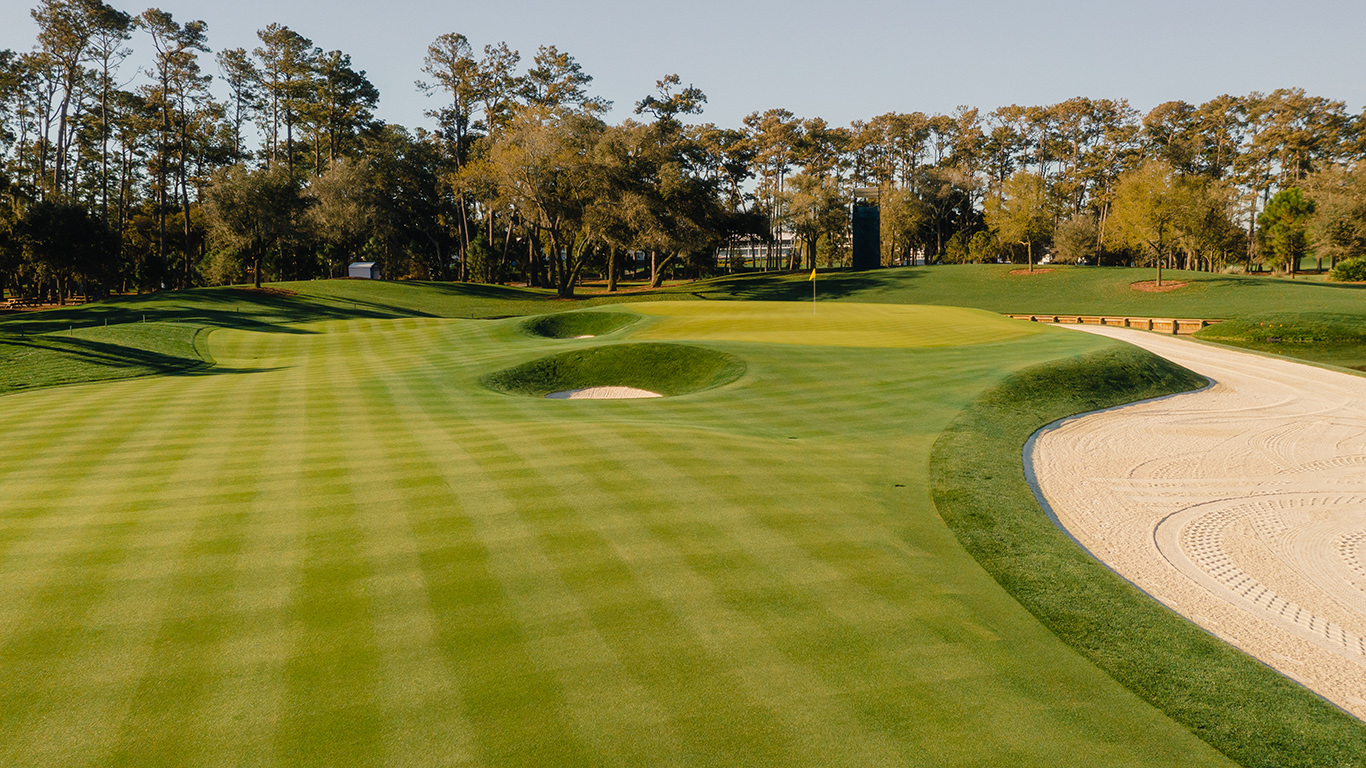
The simplest angle for a third shot on the 11th hole at TPC Sawgrass. Photo: Andy Johnson
But getting to that favorable position can be complicated. If you play to the right off the tee, away from the big fairway bunker, you’ll have a good look at the bail-out area on the left. Your path to the green, however, may be blocked by the Y-shaped tree on the right.
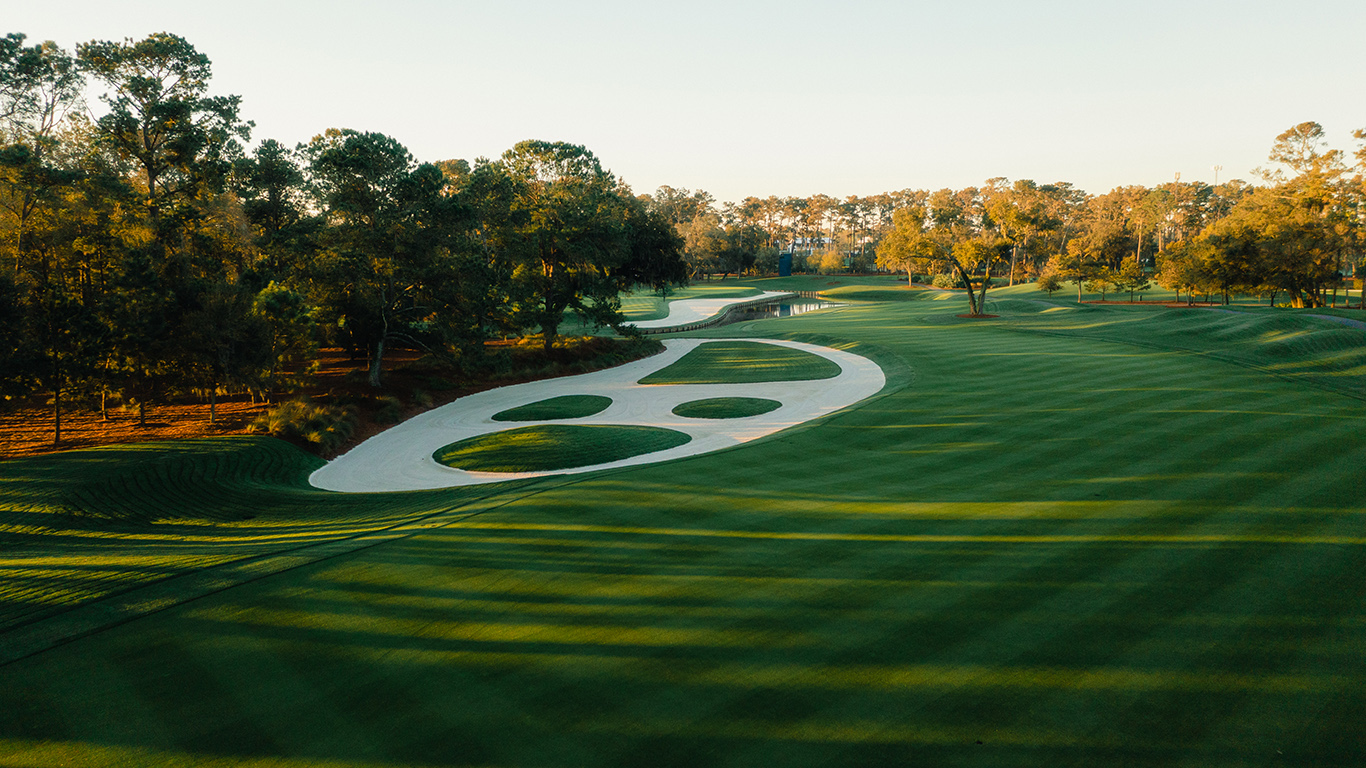
The 11th fairway at TPC Sawgrass. Note the fairway bunker, the trees on the left, and the Y-shaped tree on the right. Photo: Andy Johnson
If, on the other hand, you challenge the fairway bunker, you’ll have a better look at the green, but your route to the preferred layup spot will be screened out by the trees on the left.
So if players want to reach No. 11 in two, they face a dilemma on their tee shot. They can aim conservatively to the right and assume more risk on their second shot, or they can shift the line of their drive to the left, seeking a better angle at the potential cost of getting stuck with a pitch-out from the fairway bunker to the less desirable layup zone on the right.
Not the best layup here from Cantlay pic.twitter.com/0rqtMuC2Ur
— No Laying Up (@NoLayingUp) March 13, 2022
The 11th hole has undergone some changes recently. In the 2016 renovation of the Stadium Course, the PGA Tour’s design team replaced Dye’s mogul-strewn rough left of the green with a closely mown chipping area.
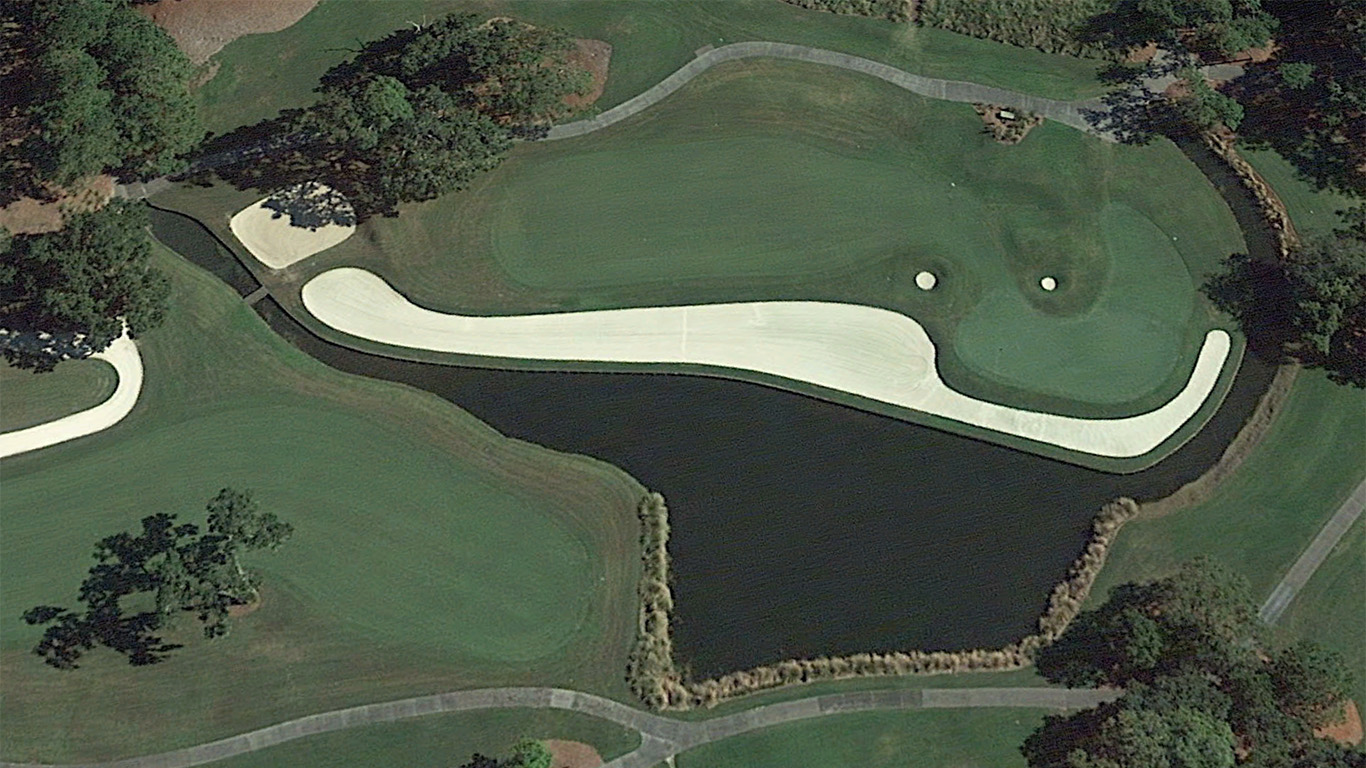
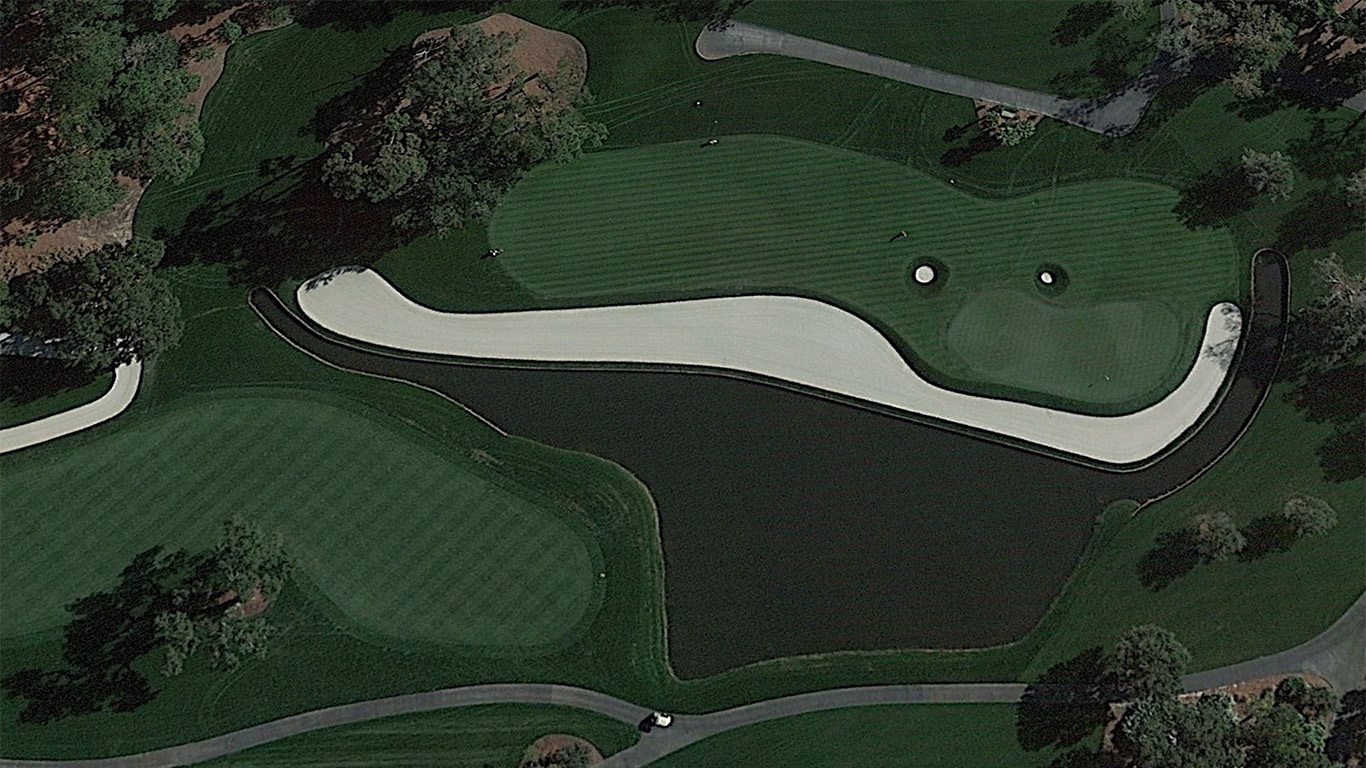
Normally I support short-grass expansions, but in this case, I think the change has undermined the hole’s strategy by reducing the risk of an aggressive second shot from a less-than-ideal position. As Matt Every pointed out in the latest episode of No Laying Up’s “Film Room” series, missing pin-high left is now a less frightening outcome. This means, in turn, that position off the tee is less important.
Hole 16 – 523 yards
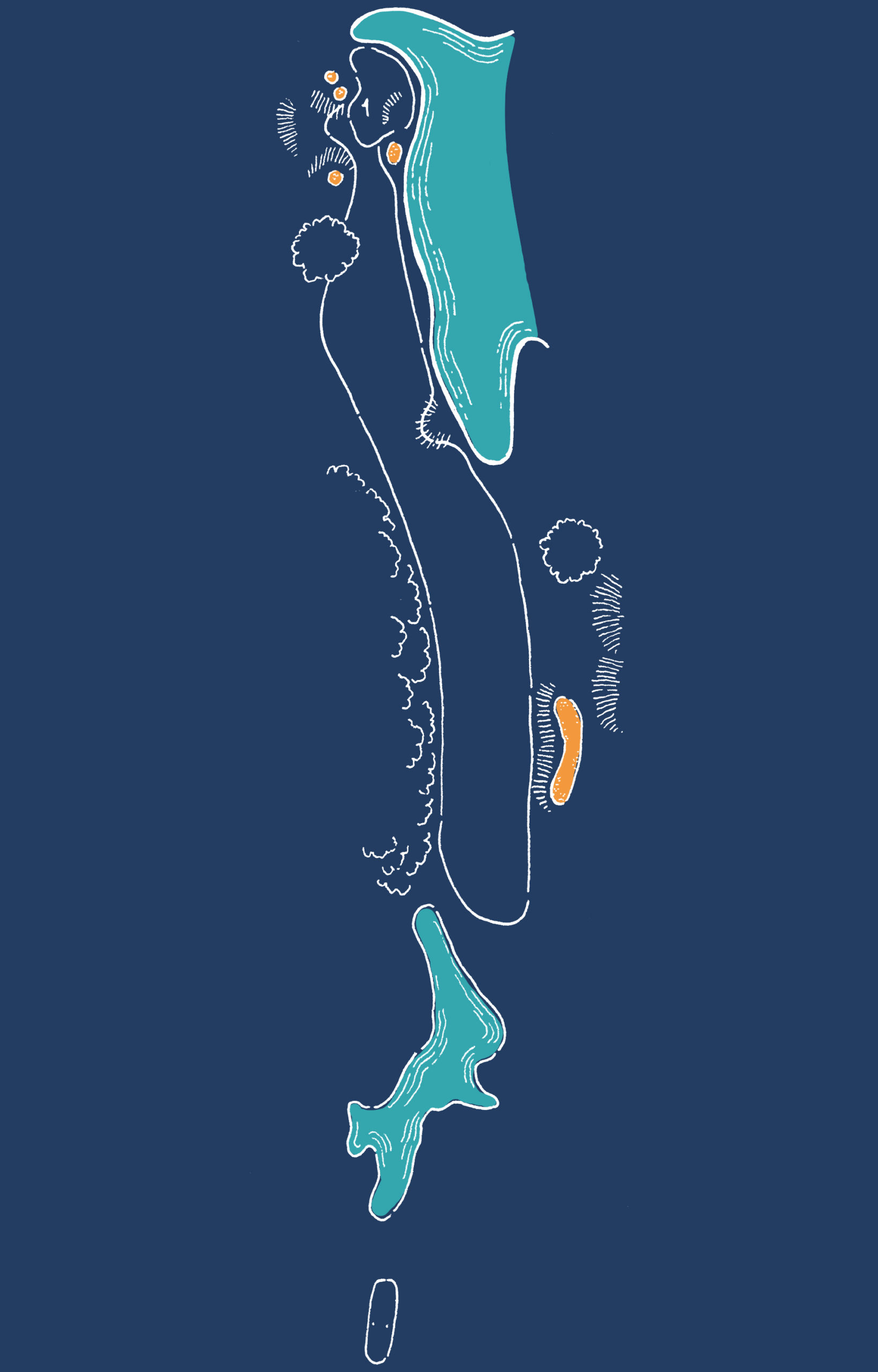
Art by Cameron Hurdus
2021 Players stats
- Scoring average: 4.610 (15 eagles, 198 birdies, 35 bogeys, five double bogeys, two triple bogeys)
- Hit fairways: 67.04%
- Go-for-the-green attempts: 71%
- Go-for-the-green successes: 23.6%
The final par 5 at the Stadium Course is also the most gettable, and it’s that way by design. Next up are the island-green 17th and the brutal 18th, two holes where anything can happen. So when you’re standing on the 16th tee, you feel as though you need to take advantage. After all, this hole has the highest birdie and eagle rate on the course. But the more you press your luck on No. 16, the more trouble you can get into.
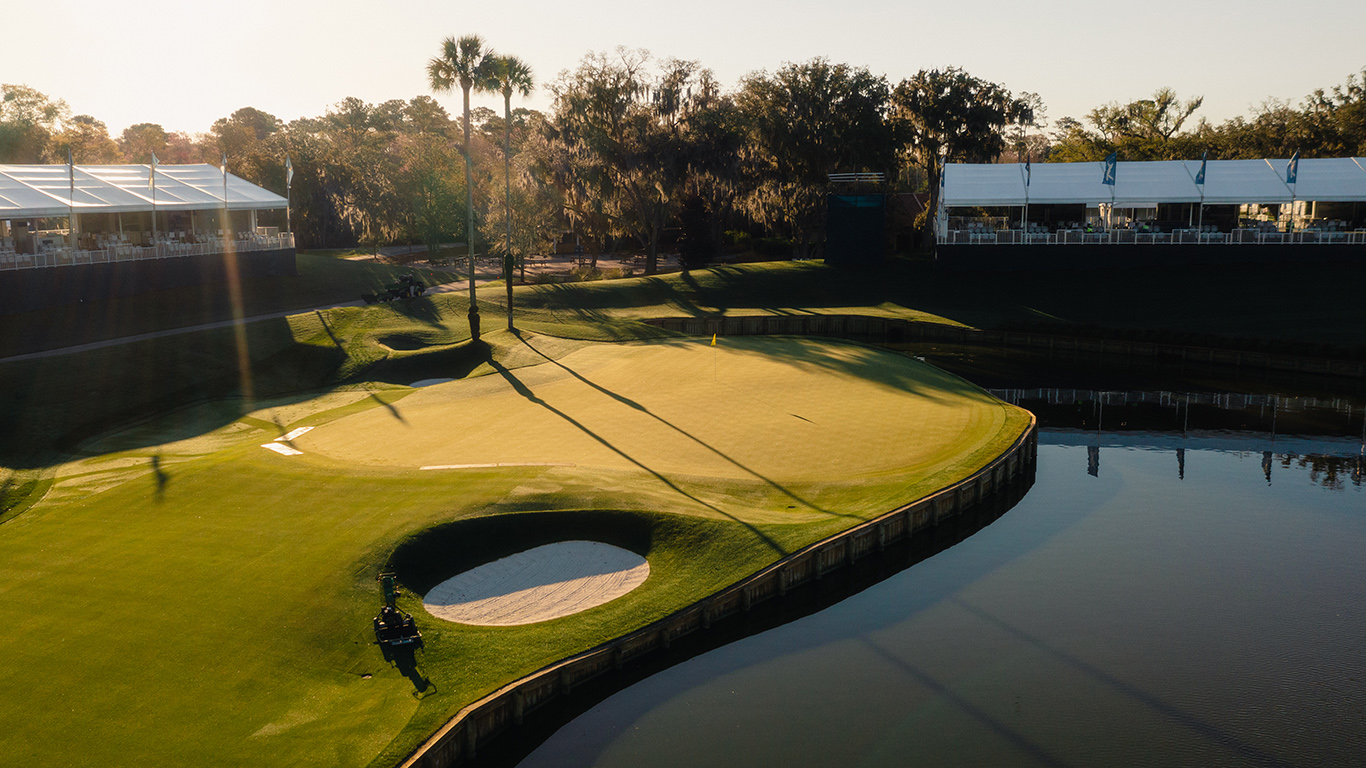
The 16th green at TPC Sawgrass. Photo: Andy Johnson
For example, a lot of water balls, especially ones that come up short and don’t earn the benefit of a green-side drop, are hit from the right side of the corridor. From that angle, the second shot is longer and has to carry a larger portion of the lake. So it’s best to find the left-center portion of the fairway. But to get there, you need to shape your drive from right to left, as Justin Thomas memorably did last year.
If you overcook your hook or left-handed slice, however, you may end up in the pine straw and trees on the left. From there, it’s easy to make bogey or worse—unless you’re able to replicate Davis Love III’s heroics from 2003. So while the 16th hole yields a lot of under-par scores, it also produces its share of disasters.
◊
Because the par 5s at TPC Sawgrass rely so much on penalty hazards, I don’t think they should be used as models for how to design a course for average players. But for the championship game, these holes do something worth studying. They force the best golfers in the world to prioritize positioning and shot-making over raw distance. For this reason, the Stadium Course’s par 5s should be mentioned more frequently when we discuss Pete Dye’s architectural achievements at the home of the Players Championship.


 by
by 
